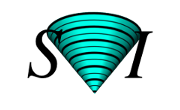This is not a time series
A Time Series is a sequence of images recorded along time at uniform time intervals. Every recorded image is a time frame.
The Huygens Software traditionally considered, for your convenience, that many file series which are enumerated in a certain way are part of a series. It would load the whole collection of files when you open any of them, starting at the selected point.
If the files in the collection are 3D images, they would be loaded as elements of a time series, where every file is a different time frame.
See more details in Time Series.
Notice that this may not be the intended behavior if your indexed files are actually independent, not part of the same physical description. The restoration results would make no sense in this case!!!
Since version 3.4 of the Huygens Software you have more control on how to load file series, see below.
Consecuences
If you load as a series (a stack of 2D images, or a time series of 3D images) something that is not physically related like that, the deconvolution results may be nonsense.
This will also consume a lot of computing time, because you will be deconvolving data in which you may not be interested. Consider the case in which you have the following collection of 3D images:
file_0.stk
file_1.stk
file_2.stk
file_3.stk
file_4.stk
file_5.stk
They are enumerated in the expected way for a time series, so if you open the first one Huygens will actually load all of them in a time series of six time frames.
If you now open file_2.stk, the whole collection will be loaded again starting at that point, so you end up with a time series of four frames.
Consider what would happen if you add these files, one by one, as separate tasks to the Batch Processor!!! Each time an image is loaded, all the others from that point will be loaded too, deconvolved, and saved as a series:
task 1: file_0 + file_1 + file_2 + file_3 + file_4 + file_5
task 2: file_1 + file_2 + file_3 + file_4 + file_5
task 3: file_2 + file_3 + file_4 + file_5
task 4: file_3 + file_4 + file_5
This is definitely not what you intended in this case, because your numerical indexes do not represent elements in a physically connected time series but probably different acquisitions in an experiment.
Do not load the files as a series
In old versions of Huygems. to avoid loading independent files as part of a stack or a time series you had to rename them and do not leave the numerical index at the end of the file name (you can just add a letter-only suffix), or simply place them in different directories so that the others are not found when opening any of them.
Newer versions of Huygens (since 3.4) have a File Series Tool to assist you in opening the series in different ways, or just loading a single file.
In the Batch Processor, you can control what happens when adding files or directories by using the Auto load series checkbox, but the File Series Tool for more flexibility is not available yet. If you instruct the program to load a series as a whole, it currently has to be named following one of the traditional conventions (Numbered Tiff or Leica Tiff). See New Batch Processor Tutorial for more details.
The Huygens Remote Manager has an option to prevent loading a file series as a whole but only the selected element. This is based on the Huygens Core option -series off for the img open that you can use on your Tcl Huygens scripts.
